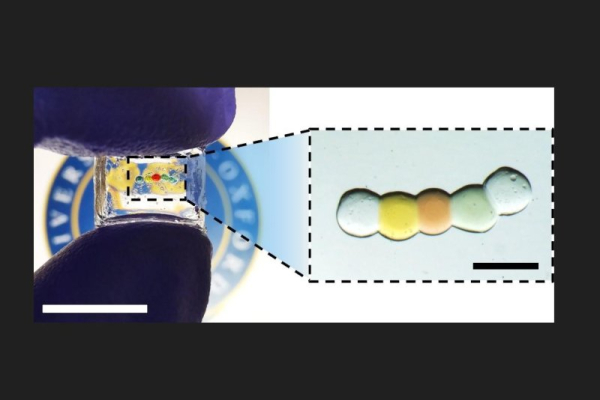Electric eels hold clue to new way to stimulate human cells

This is an enlarged version of the droplet power source, for visualization. Scientists have developed a tiny type of battery using a salt gradient on a conductive medium. This could be the next power source for devices embedded into human tissue Image courtesy of Yujia Zhang/University of Oxford
A chain reaction similar to how some eels generate electricity could be used in a novel biomedical way to stimulate cells in the human body, researchers at the University of Oxford said.
Research published Tuesday in the journal Nature shows scientists have developed a tiny type of battery that could be used to power devices embedded into human tissue. Inspired by the series of reactions in electric eels, scientists used a salt gradient to create a small current, at the nano scale. Advertisement
“The miniaturized soft power source represents a breakthrough in bio-integrated devices,” explained Yujia Zhang, the lead researcher and a member of the chemistry department at Oxford, said in a news release.
“By harnessing ion gradients, we have developed a miniature, biocompatible system for regulating cells and tissues on the microscale, which opens up a wide range of potential applications in biology and medicine.”
In their study, researchers placed tiny droplets with various salt levels on a type of conductive gel, attaching the end drop to electrodes that allows the entire medium to act as a power source for external components.
Power is controlled by varying the temperature, which effects the chain reaction along the gradient. These mini batteries regulated the activity in human neurons. Scientists believe this could be used in everything from targeted drug therapies to improved wound healing. Advertisement
Up until now, researchers said there’s be no way to efficiently power embedded devices at the micro level.
“This work addresses the important question of how stimulation produced by soft, biocompatible devices can be coupled with living cells,” Oxford chemist Hagan Bayley added. “The potential impact on devices including bio-hybrid interfaces, implants and microrobots is substantial.”
